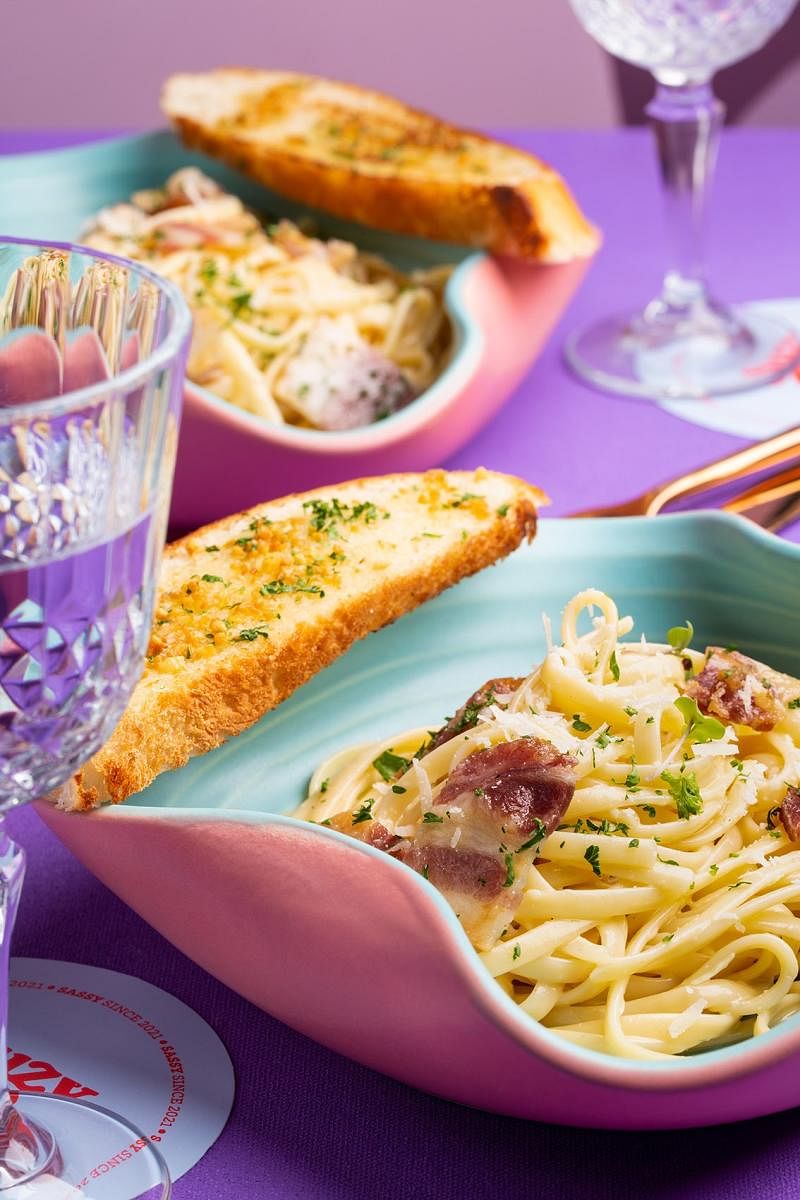China out, stoneware in



White plates and bowls in porcelain, melamine and Vitrelle glass laminates are disappearing from restaurant tables. Stoneware ceramic is taking over, and its earthy, imperfect, pastel finishes are delighting diners and their followers on Instagram.
F&B teams are working with pottery studios to customise their crockery to complement their menus, interiors and dining philosophies. This trend is an extension of the renewed love for the old and the handmade — and pottery is an ancient art.
Plate as a canvas
Chef Udayshankar Shenoy says his patisserie-turned-cafe Lazy Suzy was the first in Bengaluru to turn to stoneware ceramics. It was in 2015. “For chefs, food is art and the plate is the canvas,” he says, recalling his decision to rope in Clay Studio in HSR Layout to create his crockery.
Robin Batra, executive chef of The Oberoi hotel, agrees: “A well-researched and executed dish deserves complementing crockery to deliver a wholesome dining experience.”
Presentation is at the heart of Nouvelle cuisine, a trend that emerged in the 1990s. “I got 12-inch plates made instead of the standard eight-inch ones. Food should not look cramped,” says Udayshankar.
TV shows like Masterchef have pushed the cause of plating and Michelin star chef Thomas Keller from the US has gone on to retail his own line of stoneware dinnerware.
Functional, first
Unconventional crockery looks good but when it comes to restaurant plating, functionality cannot be compromised, says Batra. He uses deep bowls to hold gravies and shallow platters for dry items. Sushi is served on flatware to aid the use of chopsticks.
Chef Kavan Kuttappa got ramen bowls done in stoneware because it retains heat and doesn’t scratch easily. Both light and dark soups look good in them, says the man behind Naru Noodle Bar, who worked with Trayah Pottery in Koramangala to create them, in pale pink. He uses the bowls at pop-up events and also retails them.
Instagram it
Good-looking food is an instant hit on Instagram and a great exercise in marketing.
Chefs at Suzy Q by 1522, a bar and kitchen on Queens Road, have worked with design agency Second Design + Media from Bengaluru to crack their plating code. Stoneware is a force of nature, not bound by rules, and fit for the “young, energetic, feminine brand”, says partner Anirudh Kheny.
The team went a step further. “We have printed clever lines on them. You find an exclamation mark at the bottom of the soup bowl,” he says.
Pottery returns
Stoneware crockery is flourishing in restaurants and even at home because pottery studios are coming up everywhere. And ceramicists want to create novel designs to support theme restaurants and their innovative menus, Batra says.
Ceramicists get requests to make unconventional designs — rectangles, triangles, fish-shaped.
In colours and textures, grey and cream-white tableware with hand impressions are the most sought after by outlets set in green environs, while cafes go for blue, turquoise, yellow, pink, and red.
Pros
*You can customise stoneware when it comes to shape, colour, texture, engraving, and glazing (matte to shiny).
*Stoneware is durable, fairly scratch-proof, and dishwasher-safe.
*It looks good in all settings.
Cons
*Stoneware is not ideal in heavy-traffic restaurants and buffet places as chances of breakage are high. It is best suited for boutique outlets.
*It fares better with Continental rather than with Indian dishes, some say.
*Stoneware is costlier than porcelain by 20-35 per cent.
*It is difficult to stack as it may have uneven edges and shapes.
The Oberoi, M G Road
At Wabi Sabi, their Asian restaurant, white plates have ‘cracks’ patched with golden enamel. It’s a take on the Japanese philosophy of embracing imperfections, also called Wabi Sabi. The tableware was developed by Rosenthal, a German company.
At the main restaurant Lapis, the crockery is made from five textures of local clay. It was created by Art Evo from Mysuru to celebrate regional produce and specialities, the focus of the restaurant.
Lazy Suzy, Indiranagar
Chef-owner Udayshankar Shenoy wanted his crockery to complement the setting of his artsy cafe. So came the platters and teacup sets in sea greens and coffee browns, with a generous shine and specks, and relish bowls in free forms.
Shenoy got a plate custom-made to serve Panna cotta and passion fruit sauce, and pasta: “It’s like an inverted hat. The centre keeps the sauce from flowing out.”
Suzy Q by 1522, Queens Road
Stoneware comes in fun colours too. Here, you find a bowl in bubblegum hues, its edges folding in to hold the pasta in place. Or a rimmed flat plate, its light blue centre contrasting with the ravioli and sauces. Greens contrast well on a white and pink salad plate. Their heavy dessert platter is akin to a waning moon. “Desserts are served on the line where white and black meet. This lends balance to the imagery. Thickness keeps the plate stable as people dig into a dessert,” explains business partner Anirudh Kheny.
What is stoneware?
There are three kinds of ceramics — earthenware, stoneware, and porcelain. They differ on the temperatures they are fired at, porosity and durability. Stoneware is fired at 1,200°C. It is a bit more porous than porcelain but sturdier.
Not for drinks
Naveen Kumar from Mysuru’s Zarava Studio was once asked to make a wine glass in stoneware with seahorse detailing. Some bars serve tiki cocktails in Totem pole-inspired ceramic mugs.
Such requests are rare because glass remains the go-to choice for drinks. The unhindered view of colours and fizz play a key role in drinking experience.